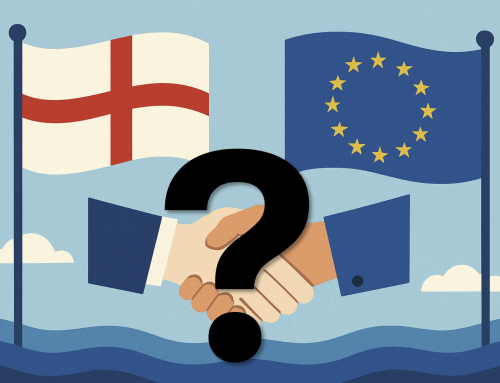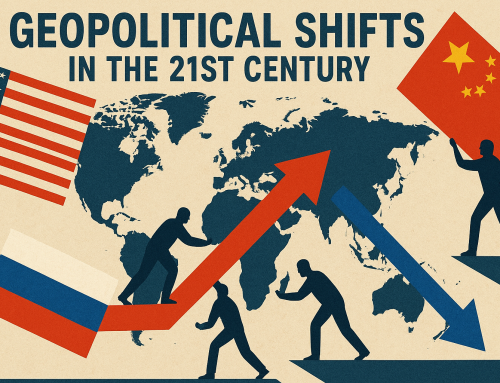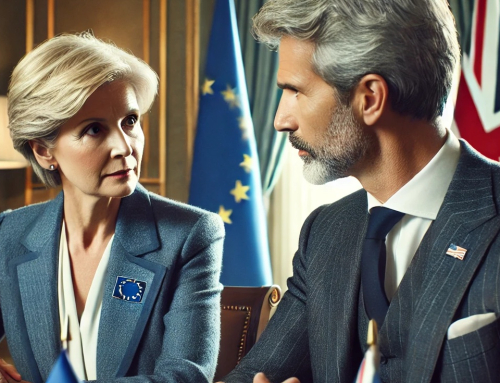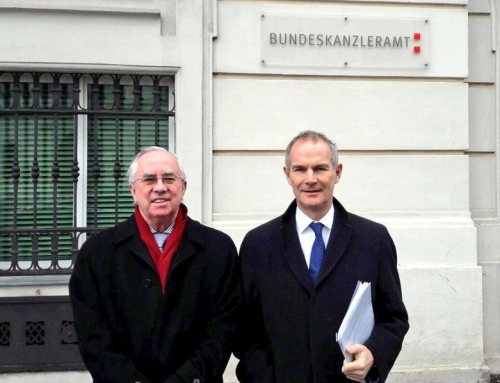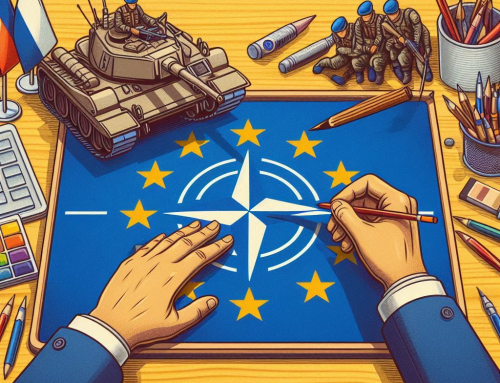
BREXIT- THE WITHDRAWAL AGREEMENT
(Summarized and edited by Alexander Christiani)
Although it becomes more likely by the day that this Agreement could ultimately land in the wastepaper bin, it nevertheless seems worthwhile to have a closer look at a document which after all is at the time the only basis for an orderly exit of the United Kingdom from the European Union.
The “Divorce-Agreement”, commonly called “The Deal” between the European Union and the United Kingdom was signed by both parties on 25 November 2018 after lengthy and protracted and sometimes bitter negotiations over more than two years.
It is- together with its three ANNEXES on Ireland, Gibraltar and Cyprus a legally binding document on both sides. In 185 paragraphs, contained in six chapters all areas of the
existing membership of the UK in the EU and the consequences of a separation are set out.
It could-strictly legally speaking- be subject to amendments, but the European Union has left no doubt it would absolutely be opposed to open the deal in any form or shape whatsoever.
The Agreement does however not cover the future relationship between the EU and the UK- that is a matter to be dealt with only after the UK has left the EU. To that extent, a non-binding POLITICAL DECLARATION of 26 pages has also be established at the same time which maps out in general and ambitious terms the willingness, yet even determination to work together in the future in many conceivable areas.
It was the original intention by the British Government to adopt an Agreement without the involvement of the British Parliament, but the Highest Court has ruled that in a matter of primordial importance for the future of the country ,the Parliament ought to have a say-therefore the “Meaningful Vote” in the Commons scheduled for Middle of December 2018.It however turned out that the Government and the Prime Minister in particular did not command enough support by the MPs to get the deal through. Therefore- at the last moment-the Prime Minister called off the vote which i.a. caused heavy criticism by all sides and particularly by the Speaker of the House who insisted that such a measure ought to be decided by the House itself and not by the Prime Minister. It now seems probable that the vote will take place at the middle of January 2019.The alternatives-as they present themselves at the moment at least- would be divorce without a deal or no Brexit altogether.
The question of a second referendum has come into play, but this is rejected by Theresa May. The other possibilities are for the government to push the “reset button”, as recently allowed by the ECJ(unlikely) or an application to postpone the date for the 29 March 2019-(more likely)to be agreed unanimously by the 27.
************
Structure of the Withdrawal Agreement.
Part One of the Agreement sets out the common provisions „These deal with basic issues, like definitions and territorial scope. The main legal issue is the legal effect of EU law for the UK.
All references to EU law require it to be interpreted in accordance with the normal rules of EU law.
Part Two: This part will mostly not apply until after the end of the transition period, since free movement of people will continue during that period. It provides that EU27 citizens in the UK before the end of that period (and UK citizens who are in the EU27 before the end of that period) will retain the same rights as those who arrived before Brexit day. To that end, it requires the two sides to keep applying EU free movement legislations to the people concerned including legislation on social security coordination and the recognition of qualifications.
Some aspects of their legal status will change, however, the UK or EU27 Member States may require them to apply to prove their rights to stay on the territory.
The CJEU will have jurisdiction to rule on how the rules apply to the EU27 citizens in the UK.
The Withdrawal Agreement ends free movement for UK citizens already in the EU27 at the end of the transition period.
Part Three: Separation provisions
This part tells out exactly how EU law ceases to apply at the end of the transition period, for a list of different issues.
More precisely: this part sets out rules for ending the application of EU law as regards thirteen issues: goods placed on the market; ongoing customs procedures; ongoing VAT and excise procedures; intellectual property protection ;police and criminal law cooperation; cross-border civil litigation; personal data; public procurement; EURATOM; judicial and administrative procedures ;administrative cooperation; privileges and immunities; and other issues, such as the European Schools.-
The CJEU will not have jurisdiction in the UK indefinitely!
Part Four: transition period
This is a short part of the Withdrawal Agreement ,yet it has the biggest effect: it keeps substantive EU law in place in the UK until the end of 2020.The key elements of the transition period are that EU law(including new EU law) applies to the UK, except in areas covered by UK opt- outs(such as the single currency, and justice and home affairs law)
There are special rules on external relations: for instance, the EU will notify no-EU countries that the UK should still be regarded as covered by EU free trade agreements.
However, the UK will not be represented on any EU institutions, including on the CJEU.
The EU laws which are not covered by the transition period are those about the European citizens.
There is also a new clause on extension of the transition period. It is possible for the JOINT COMMITTEE to decide by July 2020 if the transition period will be extended.
Very important is that the UK cannot be required to stay in the transition period indefinitely. Any extension has to be agreed jointly. On the other hand, the UK might theoretically end up in the backstop relating to Northern Ireland indefinitely. This is the most contentious point in the present relations between the EU and the UK.
Part Five: financial settlement:
This part incorporates the earlier agreement that the UK takes part in the EU’s spending until the end of the current budget cycle until 2020.
However, the UK has not agreed to pay € 39 billion in return for nothing!
The EU regards the financial settlement as money which is payable in any event regardless of any future relationship, and takes the view that the future relations could not be formally negotiated before Brexit day anyway.
Part Six: Protocell on Irish border issues
The Northern Irelands Protocol is meant to be temporary .The common travel area does not continue the free movement of people between the UK and EU .The absence of border checks makes it impossible to refuse entry to people at the border with Ireland, but it does not mean any EU 27 crossing the border( besides Irish citizens) have the right to reside or work in the UK(and vice versa for people crossing into Ireland, besides UK and EU citizens).
Protocols on Cyprus and Gibraltar:
The first Protocol confirms that that the bases in Cyprus remain within EU customs territory
after Brexit, and EU regulations on goods, including agricultural and fisheries laws, still apply. EU laws on excise taxes and VAT also continues to apply.
The protocol on Gibraltar provides for the UK and Spain to cooperate on worker’s rights as regards the Spain/Gibraltar crossing and other issues.
****************

